Most Popular Salad Herbs to grow and use in the Kitchen
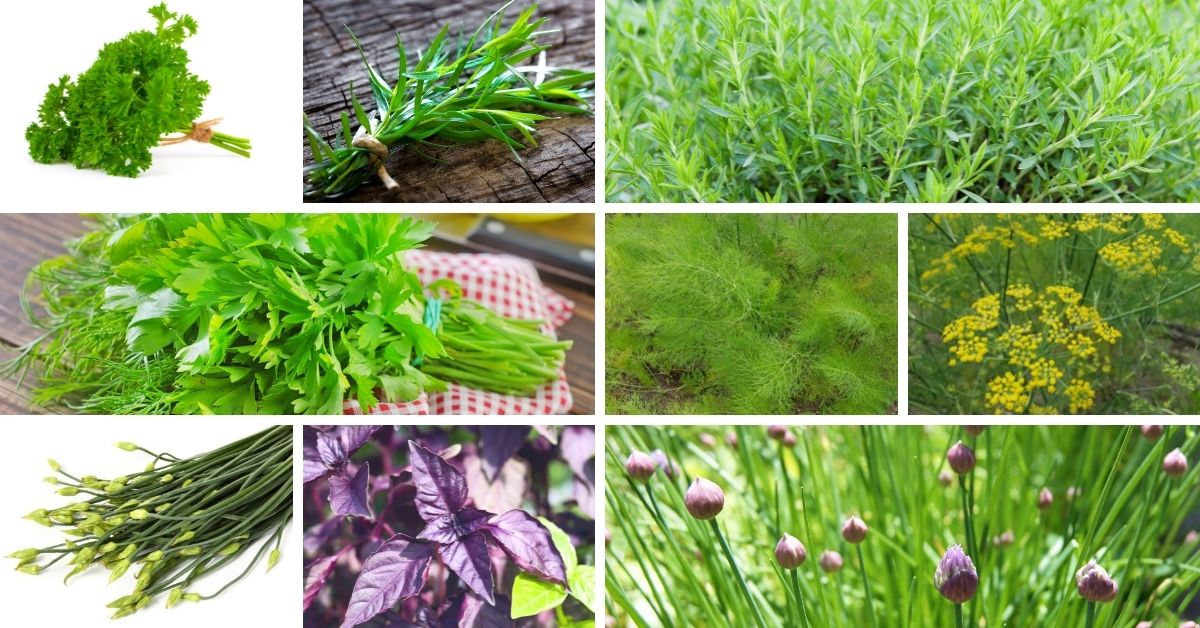
If you walk through a herb garden the air is filled with a strong spicy, pleasant smell. Fresh herbs go well with virtually everything, especially salads. Their strong flavors might help you reduce the amount of fat and salt you use in your recipes.
When choosing herbs try to match your herbs to salad ingredients. Basil, for example, would be a natural choice if your salad is heavy on tomatoes. Choose tarragon or dill if you’re adding grilled chicken.
Basil
Basils are a diverse and fascinating herb family. They belong to the tropical genus Ocimum, which is thought to have originated in Africa.
Basil is a member of the mint family and one of the most strong-flavored herbs that grow throughout the tropics and thrive in cool climates. It was introduced to the Middle East from India. The ancient Greeks and Romans knew about it, but it wasn’t until the 16th century that it made its way to Western Europe. It was barely known in the United States until the 1970s.
Basil has a pungent flavor that is rich, moderately peppery, and has a flavor of cloves and mint. It goes great with lemon, tomatoes, and garlic. Pesto and tomatoes are two foods that are frequently associated with basil. Basil flavor is determined by a range of factors, including growing conditions and harvesting stage.
Pesto and pistou are two popular basil purees. Basil is delicious with eggs, potato, rice salads, or mixed and green salads. Basil sprigs and edible flowers provide an aromatic garnish. It is also an excellent cooking herb, used extensively in Thai, Mediterranean, and Indian cuisines.
Sweet Basil – Ocimum Basilicum – Genovese basil
Ocimum basilcum, the common sweet basil in Europe and North America, is one of the more famous plants.
It’s the larger-leaved variety with a stronger flavor. It thrives in a temperate region with warm summers. It’s better to let it bush out by pinching out the center when it’s about 6 inches tall and then making sure it doesn’t flower.
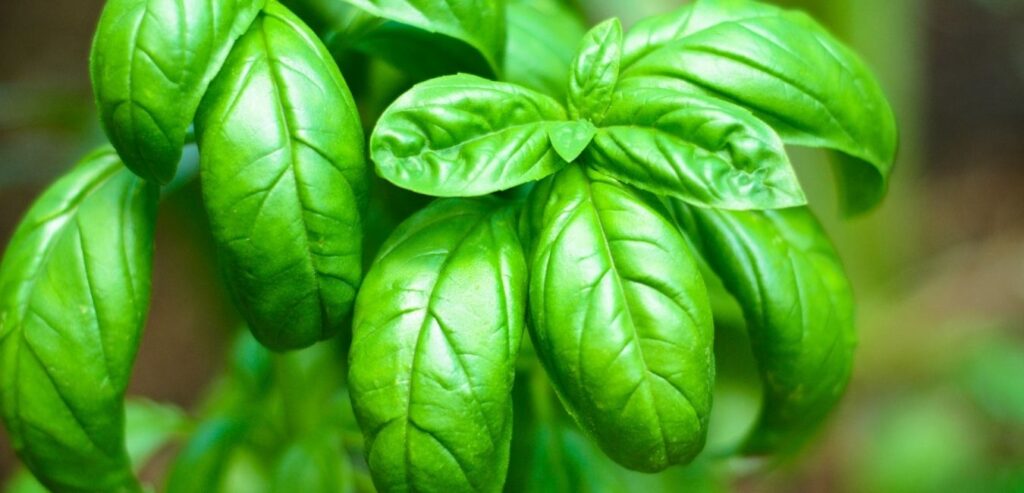
Greek Basil – Bush Basil – Ocimum minimum
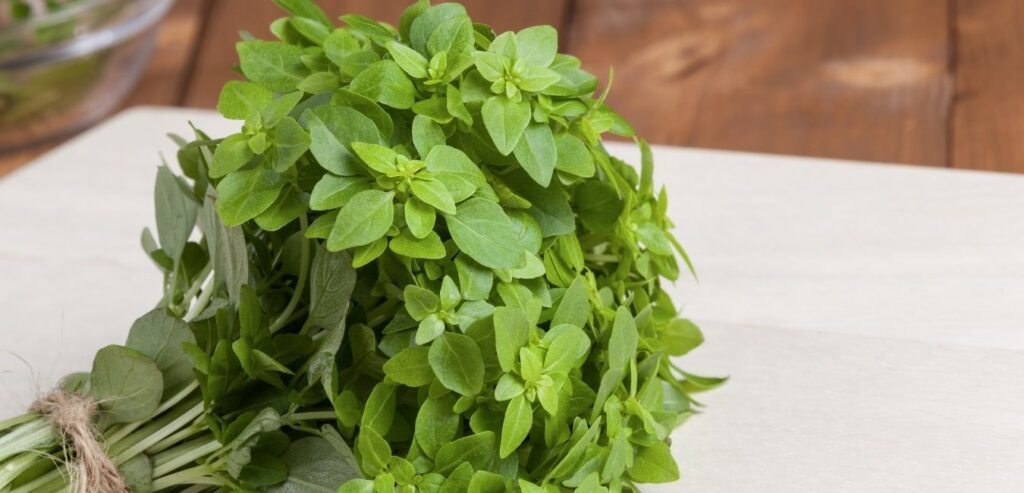
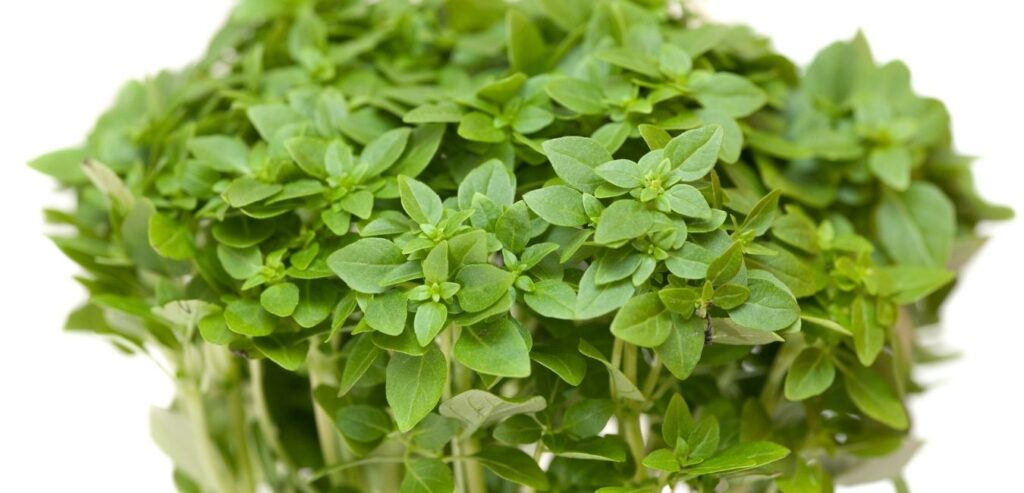
Lettuce Basil
Lettuce basil has large floppy leaves.
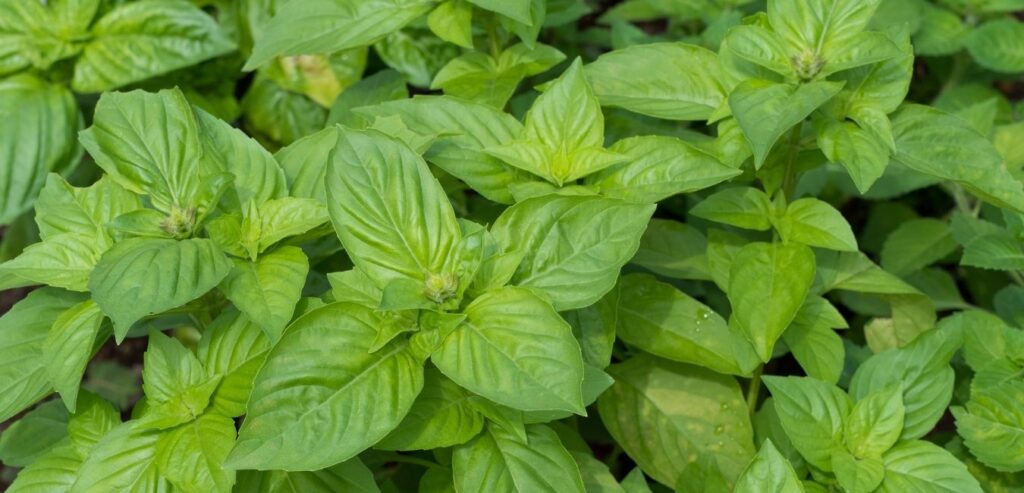
Purple Basil
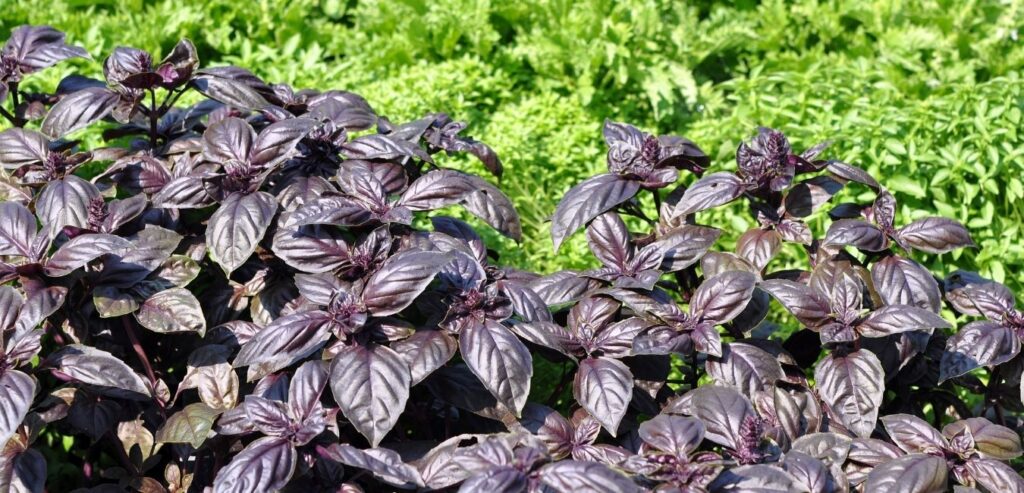
Tulsi – Pagoda basil
It is known as indian holy basil.
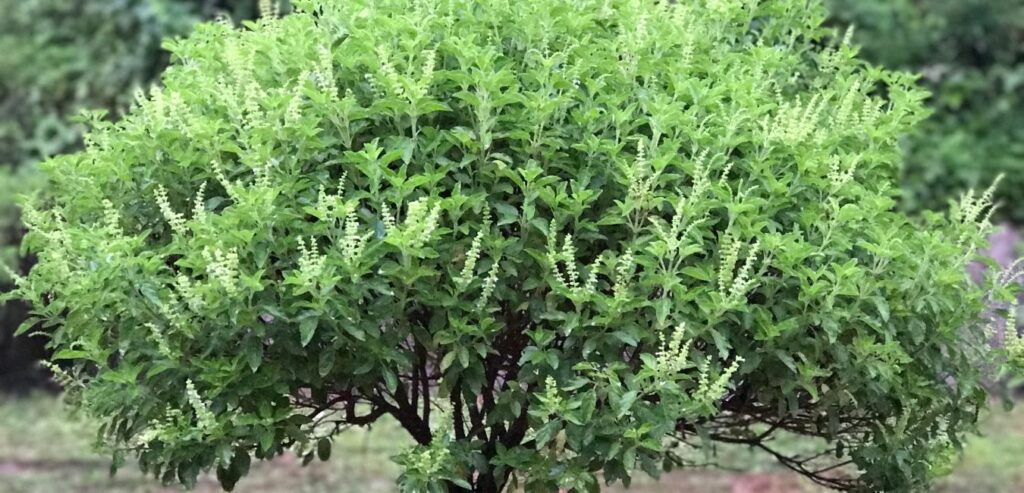
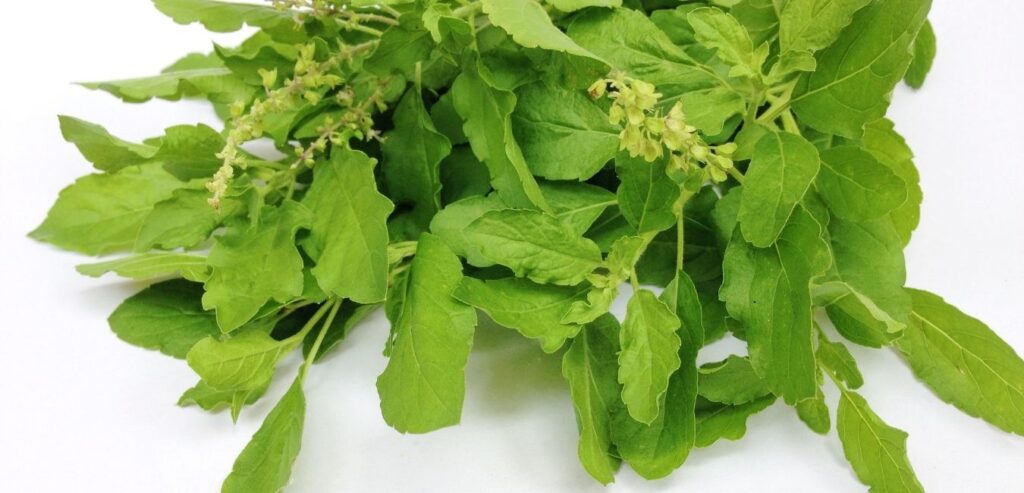
All basil plants require a light, nutrient-rich soil and as much sunlight as possible. It is difficult to keep through the winter, despite the fact that it is not strictly annual. Bush basil is more sturdier kind of basil.
Chives – Allium Schoenoprasum
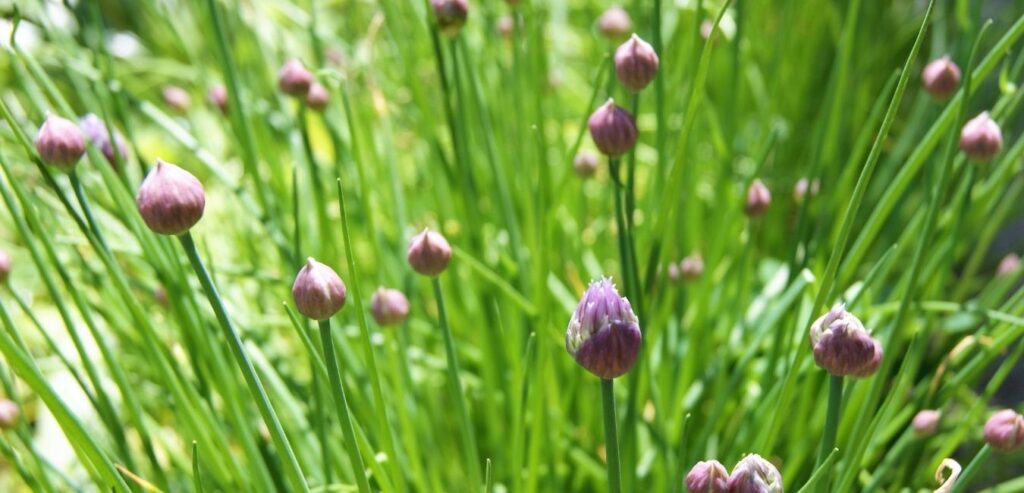
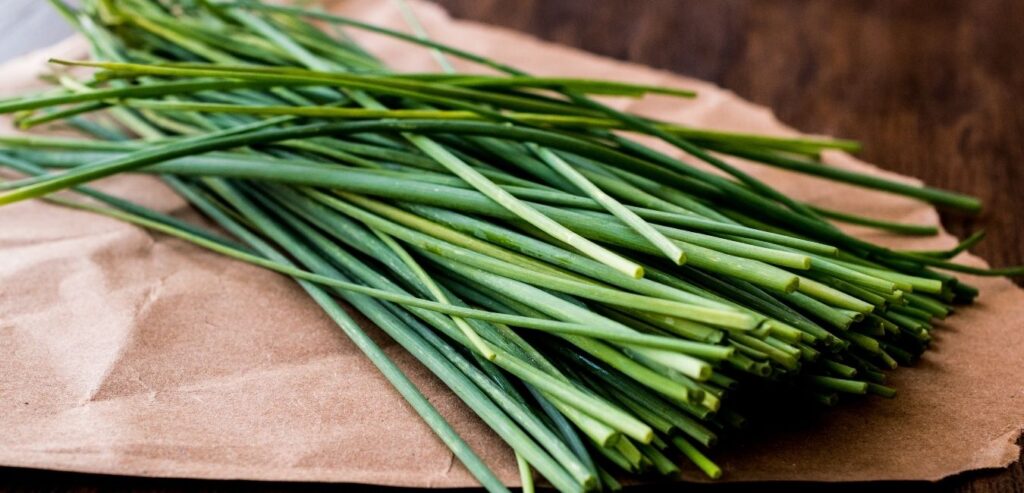
Chives are typical fine herbs and are used in a variety of sauces. It is the smallest onion species. It is widely grown and grows in warm climates, northern Europe, Asia, and North America. It’s a hardy perennial that grows in thick clumps to approximately 10 inches tall and can be grown from seed or by dividing larger clumps into smaller clumps.
The plants should be clipped several times throughout the season, and they require plenty of light, light soil, and enough of water. Only fresh leaves are used. They add light but spicy onion taste to omelets and other egg dishes. It goes very well with potatoes, soup, white cheese, and a variety of other cuisines when finely chopped.
The plant has lovely pink blossoms make it a good edging plant. The flowers are edible and can be used in salads. Flat leaves and white blooms characterize Chinese chives (Allium tuberosum).
Chinese Chives – White Chives – Allium tuberosum
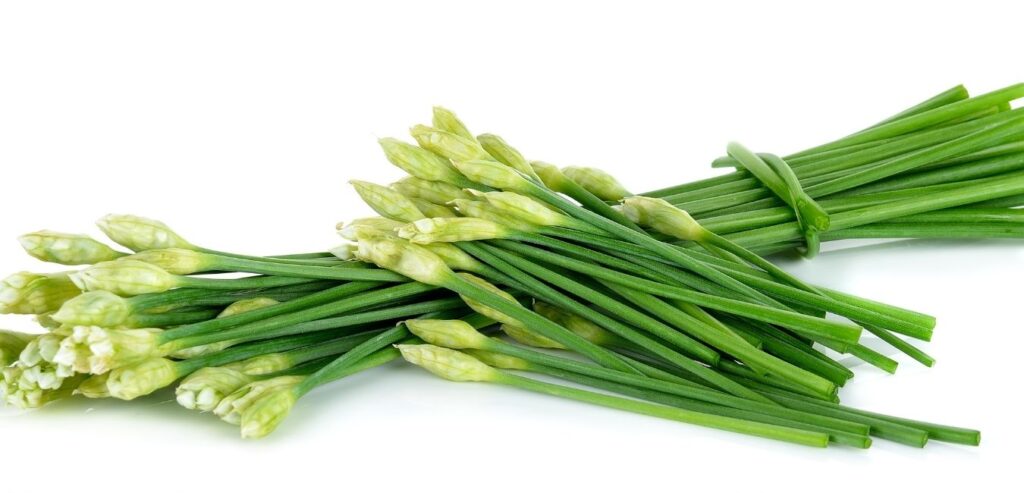
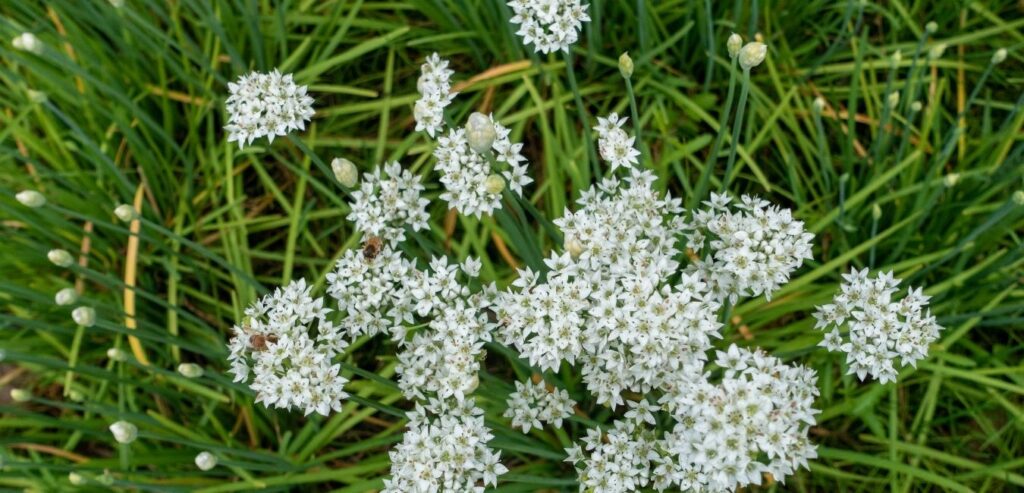
Dill – Anethum Graveolens
Dill is an annual that can be grown from seed. It looks similar to fennel but has finer leaves. Dill is a fragrant herb that pairs well with sour cream or yogurt, rice salads, egg, cucumber, fish dishes, and even cooked potatoes. Fresh dill is not usually used in cooking unless it is added at the end, as it loses its flavor quickly when heated. Dill can be dried or frozen and retain some of its flavors.
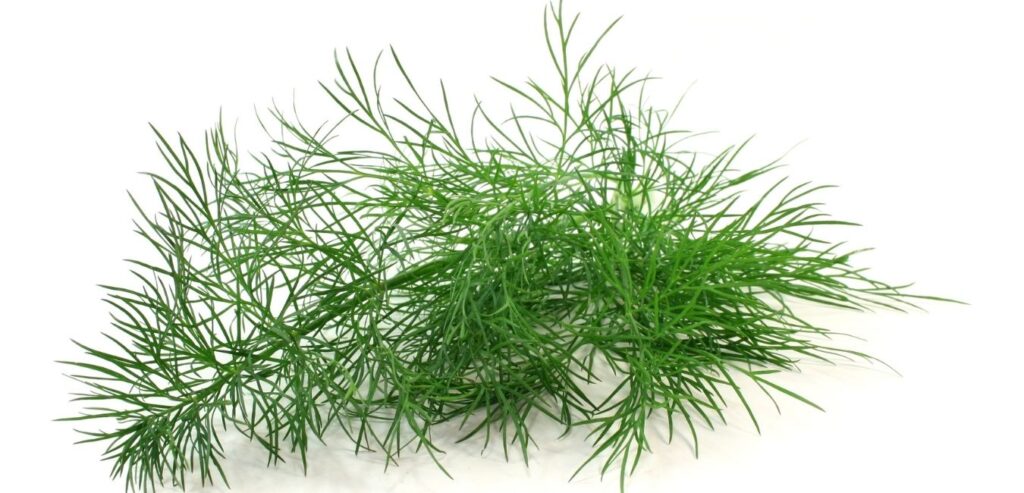
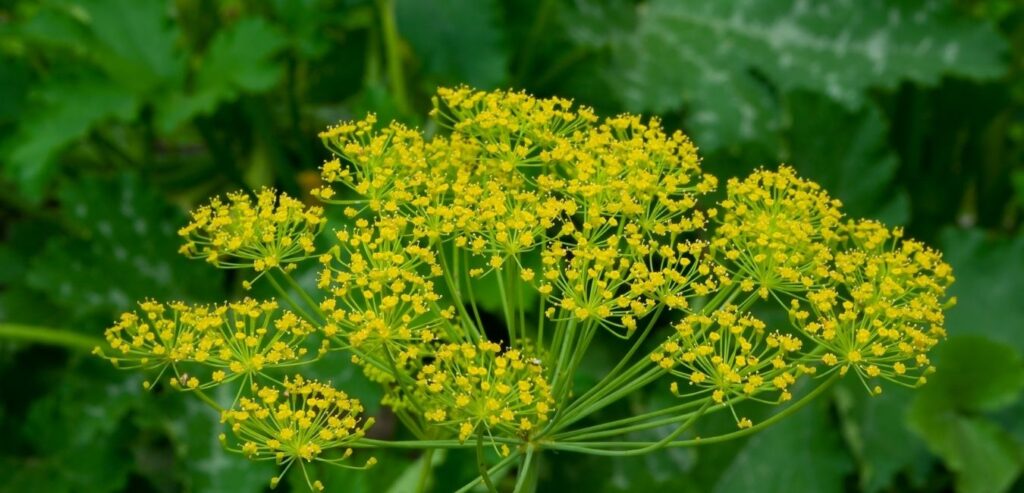
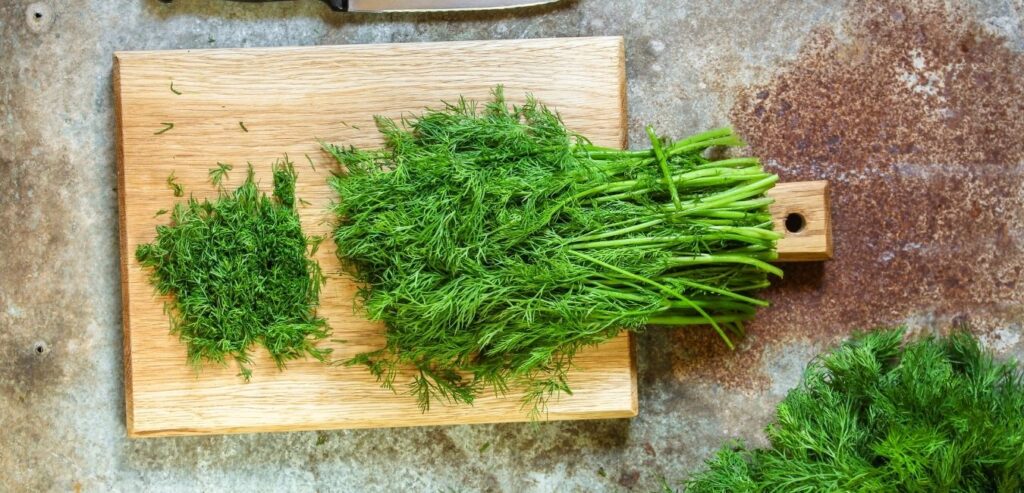
Fennel – Foeniculum Vulgare – Sweet Fennel
Fennel is a southern European native with a pronounced anise flavor. It now grows practically everywhere except in the tropics.
Florence Fennel
Florence fennel is a vegetable with bulb-like bases on succulent stems. It has a milder flavor than regular fennel and makes a great salad when combined with other herbs or blended with salad veggies. It complements cheese and can be cooked.
Florence fennel requires more care. It grows well if the soil is rich and also when the bases starts to grow it needs covering.
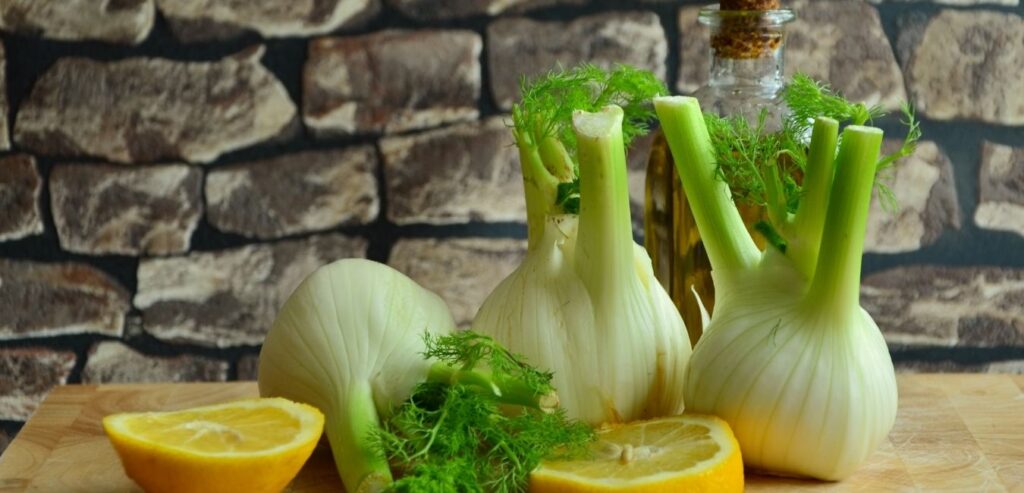
Foeniculum vulgare – Sweet Fennel
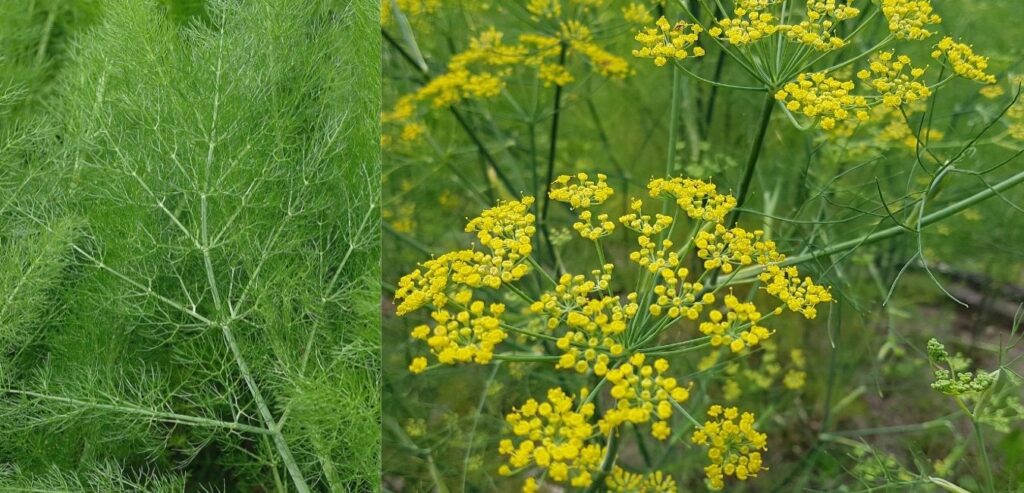
Both types of fennels are hardy perennials and can be grown from seeds. If you keep cutting lower, then you get a good supply of leaves otherwise it will grow tall and produce large yellow flowers and seeds after.
Parsley
Parsley Petroselinum Crispum is a Mediterranean native herb that has spread to many warmer climates. It is an annual herb that can be produced from seeds. To speed up germination, soak the seeds overnight. Parsley prefers light and moisture and requires drained soil. Fresh parsley adds flavor to practically any dish or salad, especially because it enhances the flavor of other herbs. It can withstand cooking, even frying, fried parsley is delicious as a garnish for fried fish or as a vegetable.
Italian Parsley – flat Parsley – Petroselinum sativum
Petroselinum sativum or flat parsley is believed to have originated in Italy. It’s more hardy and has a stronger flavor than the curly variety, which has become the most popular outside of the Mediterranean region.
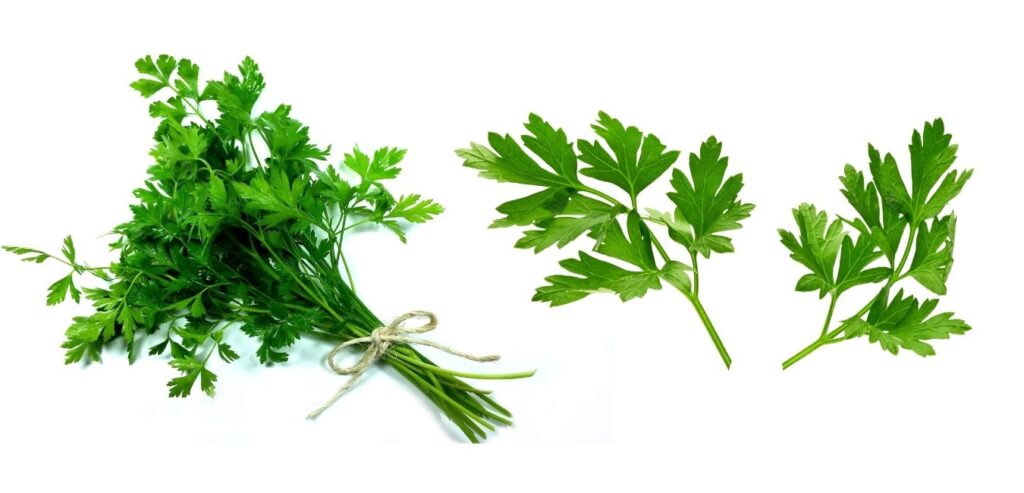
Curly Parsley – Petroselinum Crispum
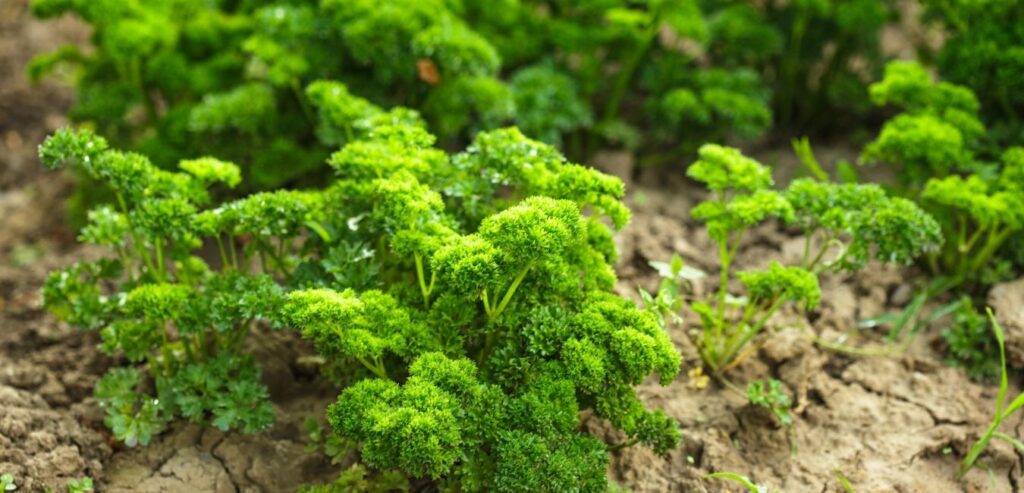
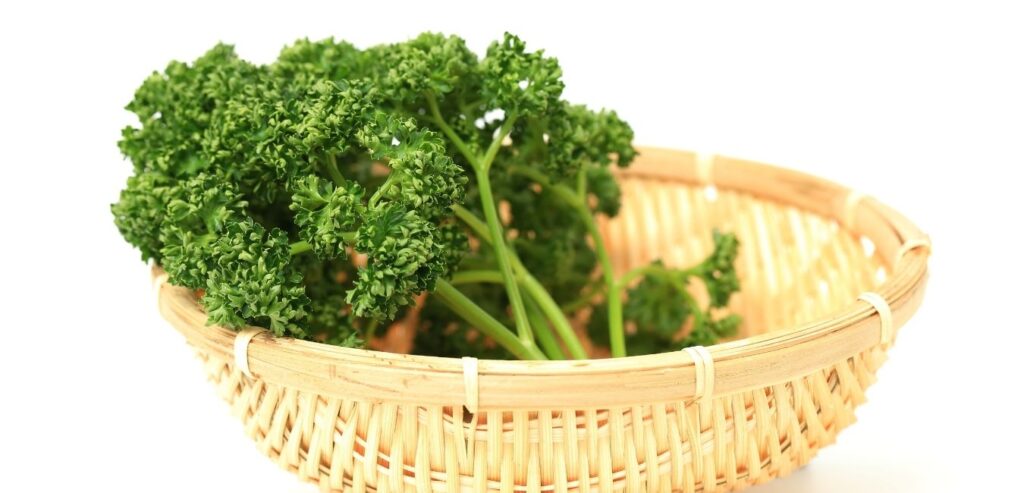
Tarragon
ARTEMISIA DRACUNCULUS, a native herb of central Asia. It’s been a standard of French cooking and it’s now grown across Europe and North America. It is a bushy perennial which requires sandy well-drained soil. Tarragon grows from cuttings or root division and thrives in a fair amount of sun. It has to be pruned back and covered in the winter.
Tarragon is a key ingredient in fine herbs. Its acidic, slightly bitter flavor pairs well with poultry dishes, egg dishes, cream soups, and tarragon vinegar. Tarragon’s flavor is highly preserved when dried.
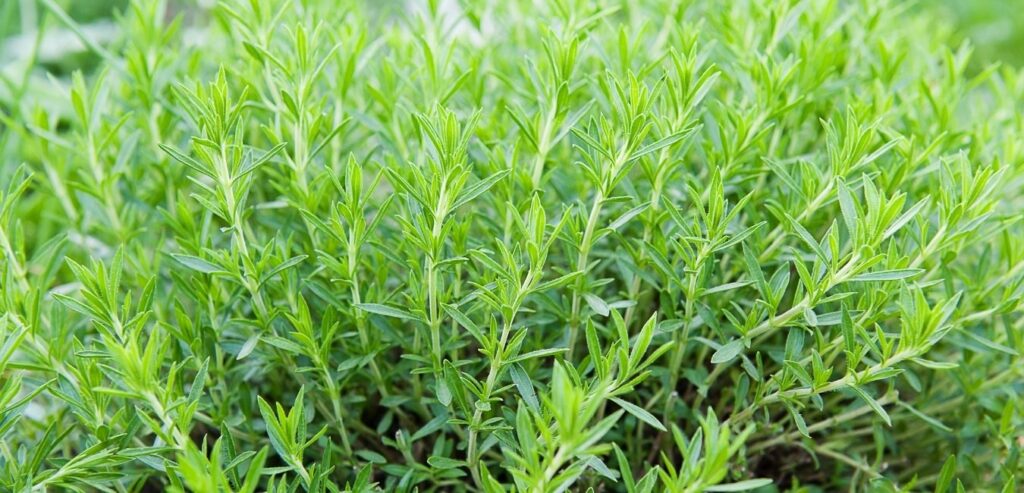
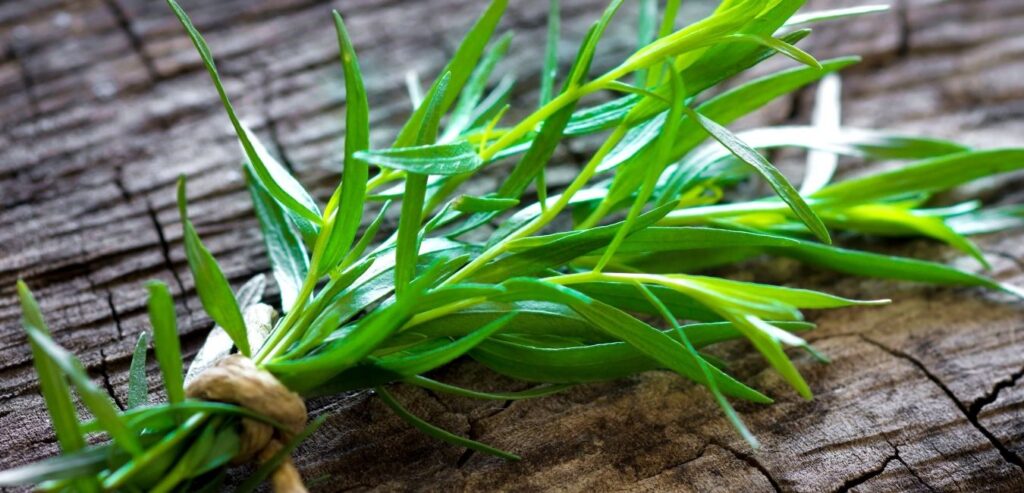
Watercress – Nasturtium officinale
Watercress is a perennial aquatic plant. It can be reproduced at any time from cuttings. It will have a richer flavor if cultivated in good, moist garden soil. Its “hot,” peppery flavor makes it a good salad ingredient, but it can also be cooked in soup and other food.
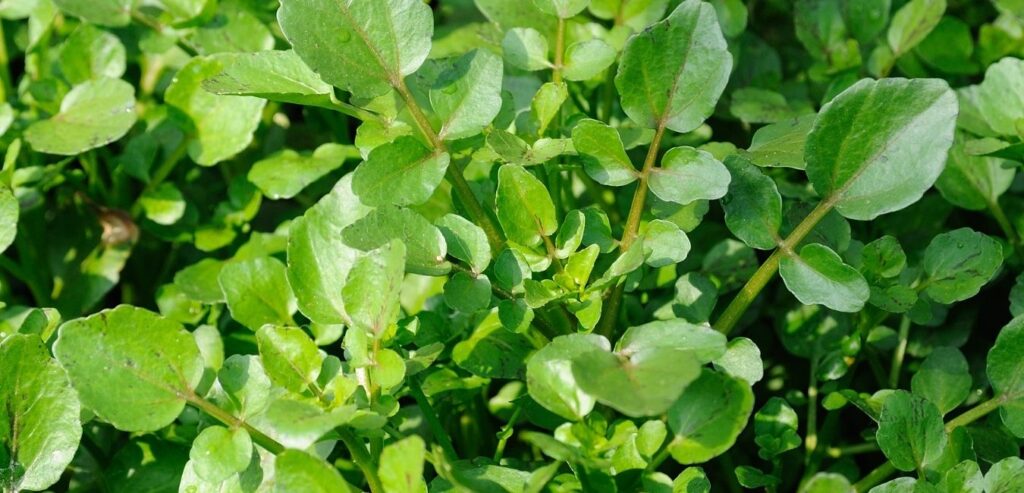
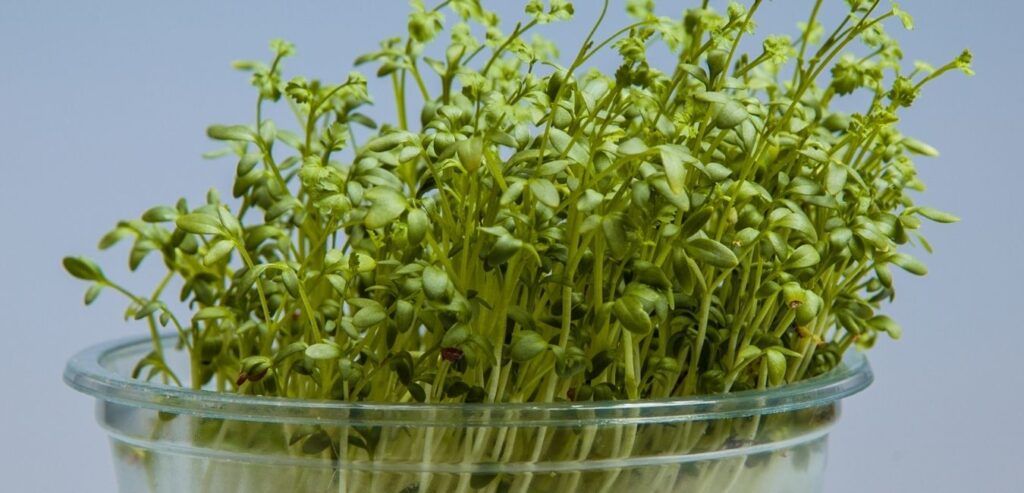
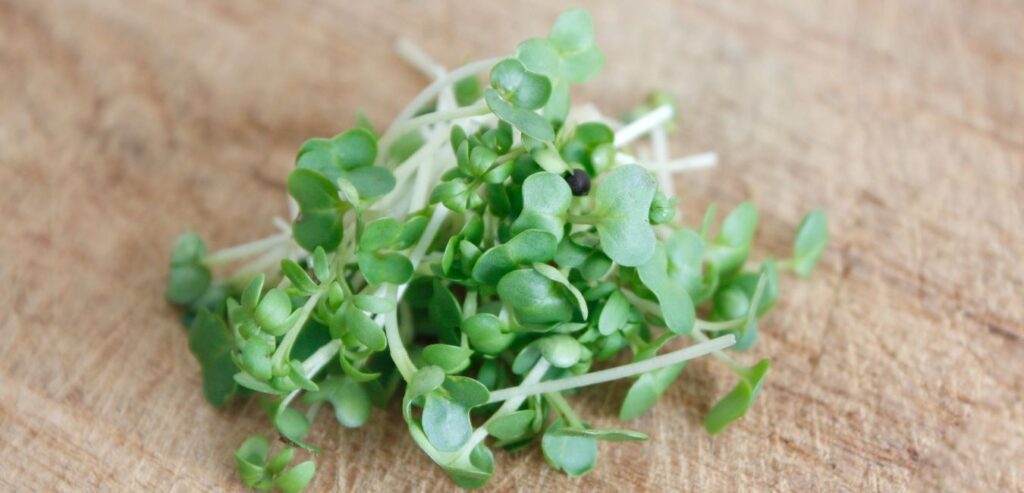
Chervil – Anthriscus Cerefolium
Chervil, a close relative of parsley, has become an indispensable culinary herb and a classic among herb plants in French cooking. Chervil produces light green, flat, lacy leaves and has a subtle flavor that is slightly anise-like. It’s a key ingredient in fine herbs, pairs nicely with soups, potatoes, eggs, chicken, fish, and salad dressings. It must be used liberally and chopped just before serving, as it quickly loses its aroma.
It’s an heirloom herb that the Romans are thought to have introduced to European herb farming. It’s an annual that grows easily from seed in light, wet soil.
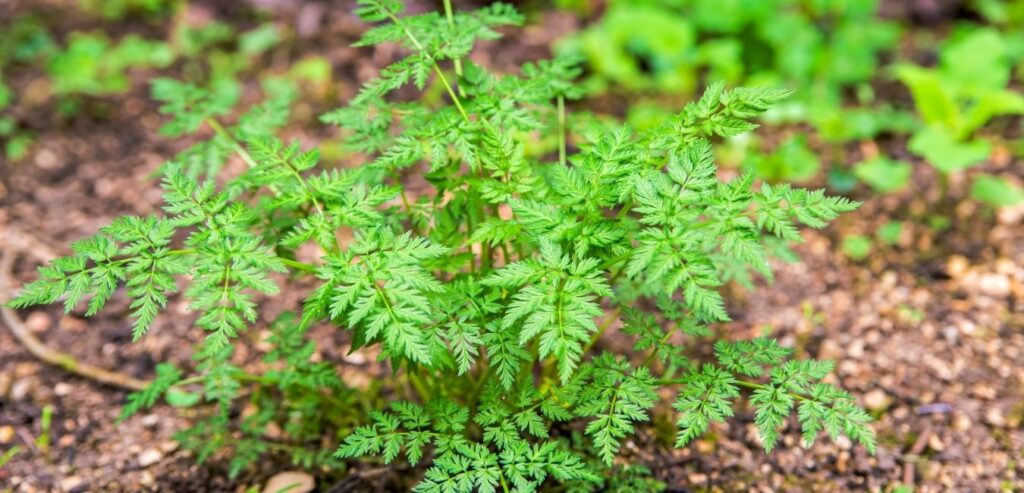
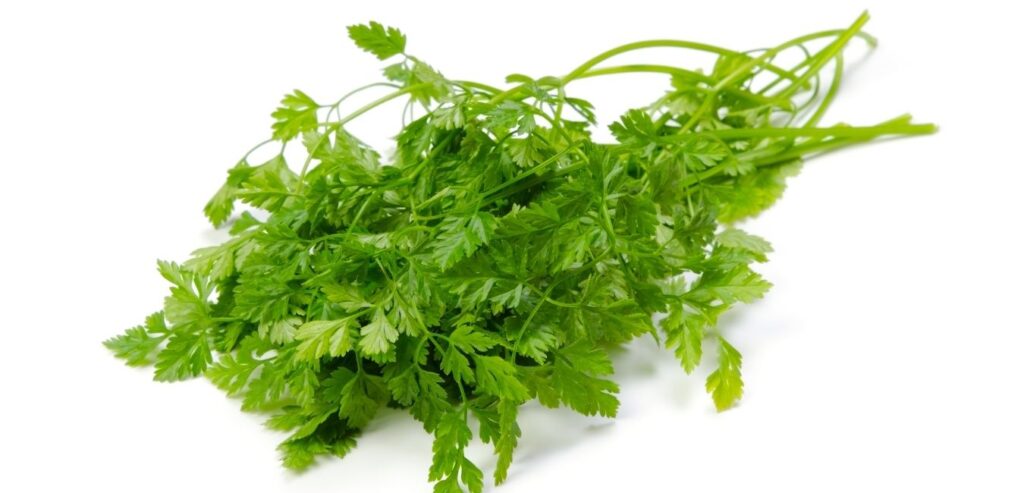
CILANTRO / CORIANDER
Cilantro, also known as coriander leaf or Chinese parsley, is a herb that comes from the coriander plant. Cilantro goes well with salad and also flavour spicy Mexican, Chinese, Southeast Asian, and Indian dishes. Coriander is the name given to the seeds of cilantro.
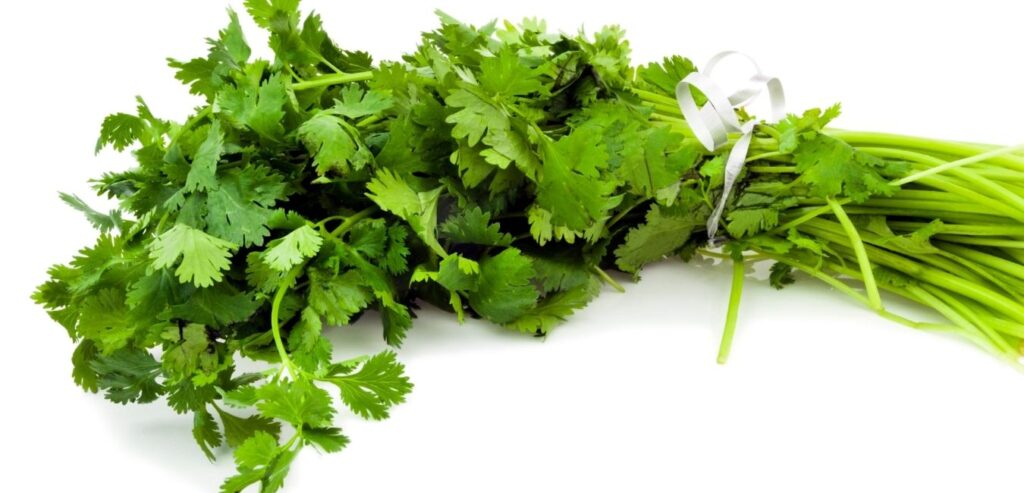
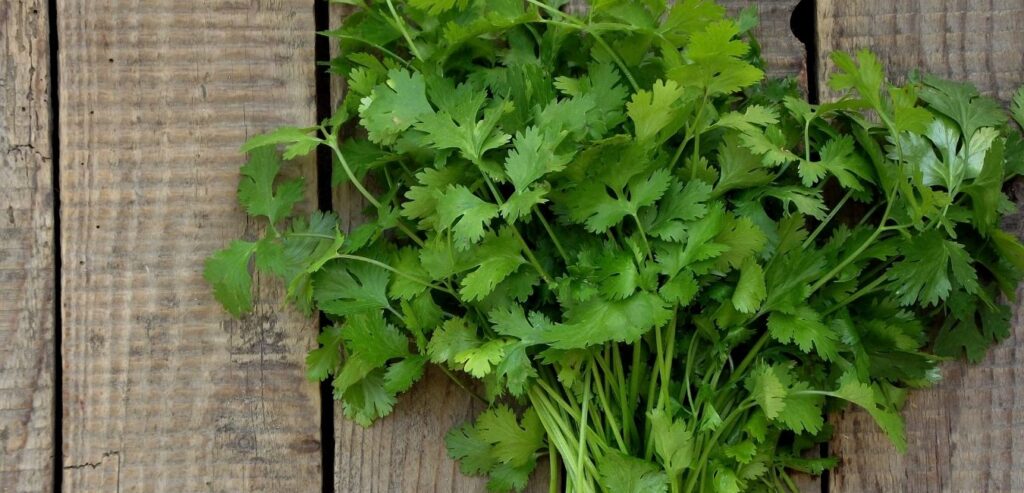
The classic french fines herbs are parsley, chives, chervil, tarragon and thyme.
Basil, Bergamot, Horehound, Hyssop, Lavender, Lemon balm, Marjoram, Mints, Oregano, Perilla, Rosemary, Sage, Savory, Thyme.
